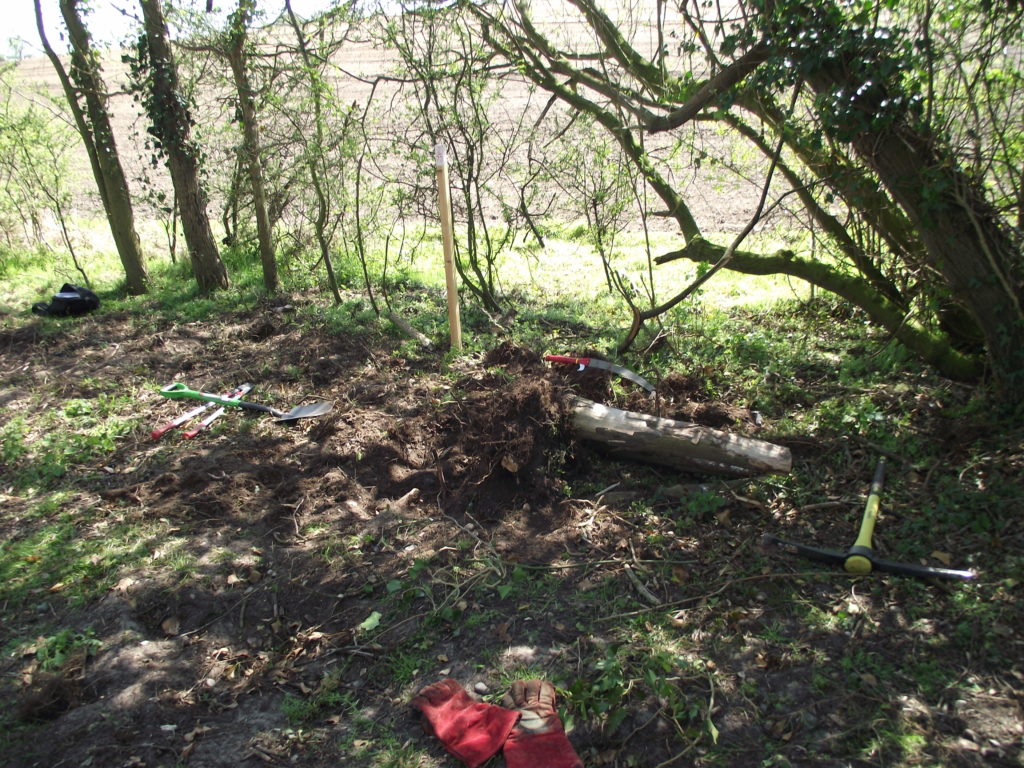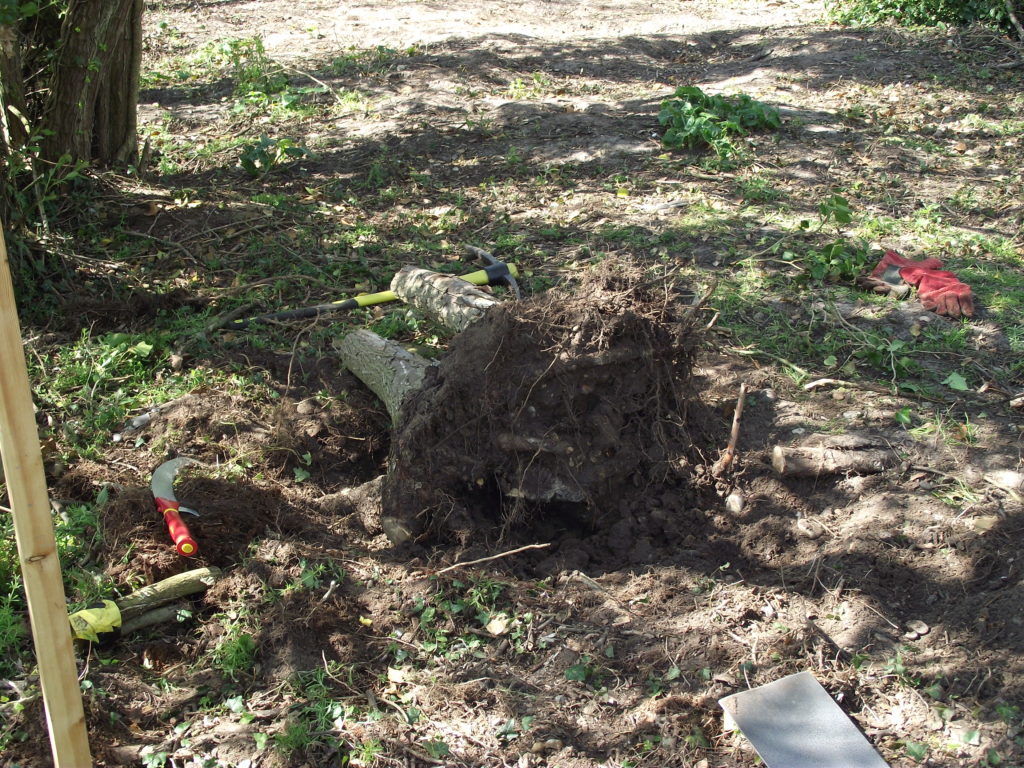
The Trust’s onsite gang of intrepid volunteers have got well stuck in to the spring work at Wenhaston. Our locally-based contractor Luke Wilby has greatly improved the Blyford Lane entrance, first widening the splay to the road, and then hardening around the gates with a crushed rubble/hoggin mixture. The material left over from this operation is gradually being spread to increase the area inside the gates on which our railway tour bus can turn off-road. As we have spent our current budget (for the moment), this work is done by hand with rakes and shovels. The prospect of moving a couple of cubic metres of fill this way is quite intimidating, so we tend to do it for a half-hour or so at the beginning of each workday.
Toby has strimmed the nettles in the station site, and also made a wide path through the greenery along the entire trackbed: because much of the tangle of dead trees, brambles and undergrowth is gone, the sunlight is encouraging the ground cover to grow very fast indeed. The plus side, however, is that the live trees, which were strangled by rubbish, are in increasingly fine fettle
The main work divides into stumping (which is practically endless), and sorting the timber (almost entirely long-dead elm) from the south boundary into neat and discrete piles of trunks (which will be logged) and wildlife habitats made of small branches and brambles (which will stay). John (who in his other life is Southwold’s Town Crier) brought a pulley set and rope, to see if that was an easier way to pull out stumps. This worked quite well, but needs to be beefier to cope with the larger roots. By a combination of digging out, and attacking the roots with a pick, a mattock, an axe and a saw (the first three being sharpened to a fine edge), Chris, Bob and Toby, James and John managed to complete clearance about three chains (66 yards) from the west. John and Maureen continued with the work to clear moribund bramble and ivy from around the roots (and in some cases in the crowns) of the trees which line our southern boundary.
One of our obligations as landowners is to ensure that the culverts are clear, so that backed-up rainwater does not damage other adjacent property (and to keep our own land dry, of course). The main watercourse which divides Trust land in two, and runs into the river, is crossed by a walkway which is culverted: Bob and Toby, later joined by Chris, rodded this out, and were rewarded by a good water flow – but also by at least one wet and muddy foot, as the level overtopped the welly.
We were interested to see that one of our chainage marker posts – at the east end – has completely disappeared, and must have been removed from site by persons unknown. We do have our suspicions about the motive for this theft and trespass.
John Bennett, the Trust Chairman, came to see the team and cheer it on: he also prospected the footpath which crosses the river Blyth and passes close to our boundary: we would ideally like to provide a permissive path connecting this to Blyford Lane (as is indeed recommended to us as landowners under the National Planning Policy Framework), but there has been local resistance to this idea. Many local residents, however, do walk their dogs on our land anyway, without any such sanction.

